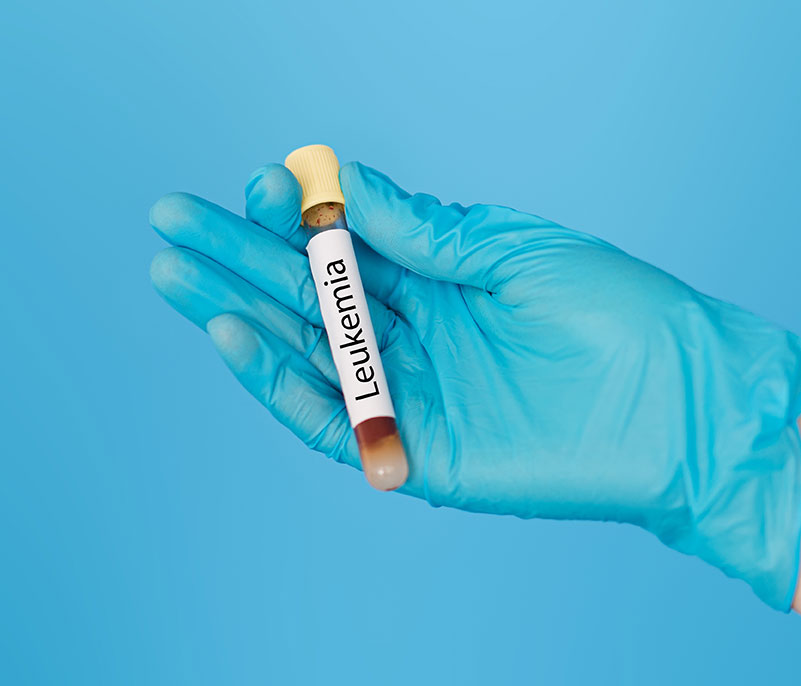
Leukemia is a type of cancer that begins in the bone marrow and affects the way white blood cells are produced. A person with leukemia produces abnormal white blood cells that do not function properly. These abnormal cells do not work correctly, and do not die when they should, making it difficult for healthy blood cells to function. Leukemia affects over 40,000 adults and over 3,000 children in the US. This disease is one of the most common forms of cancer in the US, and affects more men than women.
There are several types leukemia, the two most common being Chronic Leukemia and Acute Leukemia. Chronic Leukemia has a gradual onset. The cancerous white blood cells form slowly, and are able to function like normal white blood cells for a period of time. Physicians often find chronic leukemia during routine check-ups, even if there are no symptoms. This form of leukemia gradually worsens as the number of leukemia cells in the blood rises. As the cancer progresses, a patient’s lymph nodes swell and they may experience frequent infections.
Acute Leukemia has a rapid onset. The initial cancerous cells cannot do any of the work that the healthy cells can. This type of leukemia worsens quickly and a patient feels the effects within a short time period.
Symptoms of Leukemia may include:
- Swollen, non-painful lymph nodes
- Fever or night sweats
- Frequent infections
- Bleeding or easy bruising
- Swelling or abdominal pain
- Abnormal weight loss
- Joint or bone pain
There are certain risk factors that may contribute to a person developing leukemia. However, just because certain risk factors are present, does not guarantee that a person will develop leukemia. Among these risk factors are smoking, radiation exposure, benzene exposure, Down Syndrome or other inherited conditions, certain blood disorders or family history.
Often, a physician may diagnose leukemia following a routine blood test. After a complete blood count is conducted, a physician can see the levels of white and red blood cells and platelets to determine if a person has leukemia. A person may have leukemia if there are unusually high levels of white blood cells and low levels of red blood cells and platelets. A physician may also take a bone marrow biopsy, spinal tap, or chest x-ray.
There are several treatment options for someone with leukemia. Stem cell transplant, chemotherapy, radiation therapy, biologic therapy and targeted therapy are all effective options for leukemia treatment. Different types of leukemia respond best to certain treatments, and often a combination of treatments will yield the best results.
If you are experiencing any of these symptoms, or believe you may have leukemia, contact your physician. Early diagnosis allows you and your physician to discuss treatment options and begin battling this disease. There are many treatment options for this disease, and it is important for you and your physician to explore all options.

